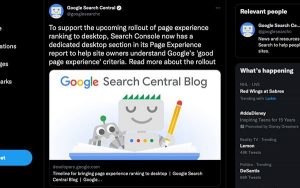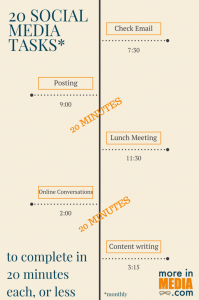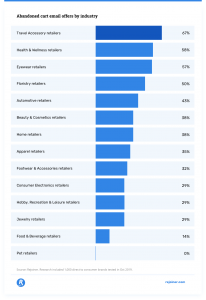Ask ten people about a blog’s role in a company (especially at a B2B company) and you’ll likely get ten completely different answers. It’s a place for a company to post product updates.
It’s a place to share news about the company. It’s a place to put afterthoughts that have no place elsewhere on the website. It’s a place for educational or entertaining content, but it doesn’t factor into the big picture for the business. It’s something for the intern or new marketing associate to experiment with.
So what’s the blog’s role in a company’s marketing strategy?
In my opinion, the blog’s powerful role in business is often completely misunderstood. Here are roles that I see business blogs serving for many companies today. Which ones is your business taking advantage of?
1) Your “magazine” vs. your company’s “product catalog”
Face it. Your website is probably as interesting as a catalog, and unless someone has a very specific thing they’re looking for, they probably won’t come back for a second visit. Your blog, on the other hand, can be populated with interesting, educational or entertaining content that brings people back again and again. In fact, people may actually subscribe to be updated about new posts (see “easy lead nurturing” below). Who (other than competitors) would subscribe to be updated on any new pages on your website?
2) Your company’s emissary in social media
Each post you send is like a not-so-deep space probe into the world of social media. If it’s got an interesting topic, headline and picture, it can often be found, be shared and generate visits (and possibly links). And of course your built in audience in social media will often help you share that great post as soon as it’s published.
3) Social media engagement assistant
What you write about, who you write about, or who you let write on your blog can impact your social media engagement. Writing about industry influencers, doing book reviews, having guest bloggers from your industry or writing about a keynote or other event can help your social media strategy, can provide an entree into a discussion with someone you want to talk to, and can expose you to someone else’s audience in social media.
4) Long tail page generator
Each blog post represents several opportunities to rank in search for long tail keywords (e.g. “IT project management tools” is a long tail keyword vs. “project management” which is a head tail keyword). Continually creating new blog posts expands your company’s long tail keyword net and drives search engine traffic (and often highly qualified searchers).
5) Link-building engine
Each (great) post or resource on your blog represents an opportunity for another blog or website to link to you. Adding in custom content like pictures you or your company takes can also lead to interesting links from much bigger sites (like the time my personal blog was linked by National Public Radio and many of their affiliates because of my pictures from Blog World LA – look for kimonos in 2011).
5) Easy lead nurturing engine
Allowing people to subscribe to your blog updates is an MVP (minimum viable project) for lead nurturing. Having people who regularly get your blog updates, including great content, occasional product updates as well as calls to action for deeper nurturing (e.g. webinars, ebooks) or trials is a great way to do basic nurturing for businesses without a team to set up tools like Marketo, Eloqua, or Hubspot (use Feedblitz or Feedburner to set up simple blog subscribing capabilities).
6) Entry path into robust lead nurturing (via marketing automation)
Your blog posts can include announcements, inline calls-to-action (e.g. “see our related ebook here”), banners or pop-ups to collect emails in exchange for valuable content – think webinars, exclusive training sessions, or ebooks. These can bring new prospects into sophisticated lead nurturing programs managed in marketing automation tools like Marketo, Eloqua, or Hubspot.
7) The modern-day press release distribution platform
Companies may still do press releases, but a well-written blog post that is written in an engaging way with visuals, video and helpful information can spread in social media further than a traditional press release. Sure, it won’t get posted in hundreds of press release content repositories, but do those matter much anyway? It’s debated as to whether press releases provides any SEO value.
8) Your company’s test-bed for new ideas/content
A blog is a great place to put out a new concept or idea to see how it resonates with your core audience. Push it out and promote it via social media, email and even promoted social posts or PPC ads to get it in front of the right people and/or a large enough set of people to get quick feedback.
9) A thought leadership platform
Where do your company leaders express their opinion on big industry trends? Perhaps on LinkedIn Pulse or on Medium or on major industry sites, but you also want some thought leadership on your own property. Your blog is a perfect place to show your company’s thought leadership.
10) Company culture and personality reinforcer
People not only buy products and services, but they buy relationships. To connect with your target audience, it’s important to express your company’s personality. You can do that via your website in some ways, and via social media in the way you engage and what you share. Your blog and the topics, headlines, images, video and writing style can also convey a lot of personality that draws you closer to your ideal customers and may push you away from those that are not a good fit.
11) Your content pool for re-use elsewhere
All of your great blog content can not only drive search and social visits for a long time, but each piece can have a second or third life as part of an lead nurturing (email) stream, as a part of an ebook, as part of a webinar or video or whatever else you can dream up!
So do you agree?
Do you agree with the different uses for the company blog? Which ones do you find are the most valuable for your company? Let me know in the comments below.
(254)







